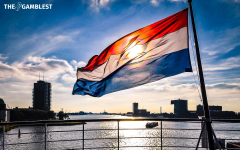Once upon a time the promise of Net Zero enjoyed such universal support that a Tory government signed the UK’s Net Zero pledge into law. Today, the Tories say they’d scrap it – while alarm bells are ringing as the costs of the policy become clearer.
In June 2019, Prime Minister Theresa May passed a law – with near unanimous parliamentary backing and pretty much no debate – committing the UK to achieve Net Zero by 2050.
She hailed the move as a “historic step” that would make the UK the first major economy in the world to set such a legally binding target.
“Now is the time to go further and faster,” she said – “for our children” – and it was framed as a moral issue, a moment to be on the right side of history.
And while everyone was patting themselves on the back, and as the lofty ambition was turned into legal text, the UK accelerated down a path that is only now being fully understood.
If Theresa May hadn’t signed the 2050 into law someone else would have, such was the consensus and such was the sense of inevitability whipped up in those heady pre-Covid, pre-War days.
And where has it taken us?
The UK has the highest cost of energy in the developed world – for households and businesses – and we’ve been putting wind farms faster than our energy infrastructure can handle them – leading to a situation where we – taxpayers, bill payers – will pay £1bn this year to wind farm operators to turn off those wind farms when it’s too windy.
We’ve put the cart before the horse
Vast sums are then spent on replacement gas power to keep the lights on. And that’s almost certainly imported gas, by the way, as we’ve rather gone off producing our own.
It’s a problem known as ‘curtailment’ – too much wind produces too much power and it would overwhelm the congested network and so they’re simply switched off.
The National Energy System Operator, which runs the grid, says the cost of this – the constraint cost – could surge to £8bn a year by 2030.
We’ve put the cart before the horse. Windfarms were the great visible manifestation of our Net Zero drive – but we haven’t built the pylons and cables to make them worthwhile – something that will take years and cost billions.
There’s no problem with ultimately attaining a state of Net Zero emissions; the problems lie in the law, the target date and the consequences of an ill-thought through rush.
High energy costs are forcing chemical, cement and manufacturing plants to close. Energy investment and associated manufacturing are heading for the US. The North Sea is viewed as an awkward relic rather than a natural asset and the combination of green levies, subsidies and taxes are making a mess of the entire system.
Conservatives repent
Today the Conservatives, the moral and political architects of the 2050 target, say t





